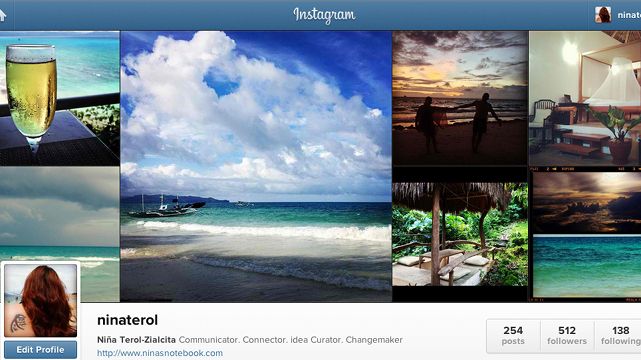SUMMARY
This is AI generated summarization, which may have errors. For context, always refer to the full article.

MANILA, Philippines – Technology has drastically changed the way people travel. The ubiquity of smartphones and 24/7 connectivity, for instance, has allowed frequent fliers to use websites and mobile apps to book flights and accommodations, keep track of mileage points and other perks, share recommendations and reviews, and post photos in real time.
A new conference, the Asia Pacific Tourism, Hospitality and Technology [APTHAT] Conference, aims to shed light on the impact of technology on tourism and hospitality, the trends that are disrupting the industry and the issues that will define the way forward. The two-day meet is slated for November 21 to 22 at Kuching, Sarawak, Malaysia — itself is a tourism draw because of the dense Borneo jungle and its mix of indigenous and contemporary cultures.
Conference sessions will include plenaries on travel and innovation, emerging trends in tourism development and marketing, “tweet tourism,” “Blue Ocean” strategies for tourism, as well as breakout sessions on eco-tourism and sustainable development, social media marketing and many others.
According to Letitia Samuel of USCI Communications [APTHAT organizer], “Technology is changing very fast, and somehow its effect on the tourism and hospitality industry is very significant. What we hope to achieve with this conference is to provide the platform for discussion on how best to use existing [technologies] to further enhance business activities.”
‘Social mediation’ and tourism
Dr. Madanmohan Rao, a Bangalore-based social media author, consultant and research project director of the Mobile Monday Community, will be speaking at APTHAT about “tweet tourism” and opportunities for travel marketing in the social media space.
“The convergence between mobile media and social media — thanks to mobile Internet — is changing the way tourists and the tourism industry are accessing, publishing and sharing information and connections. This means the industry must fully understand what ‘C2C, B2C and G2C’ communications mean,” he says.
“Social mediation is increasingly becoming an important part of tourism, in addition to the usual ‘top-down’ channels from the tourist industry,” he adds.
For Rao, social media and digital technologies are integral not only to tourism development and marketing; it’s also a lifeline for travelers during times of emergency or crises.
He explains, “The tragic events of the Westgate Mall terrorist attacks in Kenya have shown how social media [especially Twitter] were used by tourists and locals caught in the attack, as well as by their loved ones, the local police and foreign embassies. If you are a tourist, you better learn how to use social media and mobile tools in times of emergency like these, as well as during floods, earthquakes, accidents, illnesses and robberies.”
Curation, community and Couchsurfing
Dr. Rao also shares an “8Cs” framework of digital media, which will be the focus of a workshop on mapping social media in the tourism industry: “Connectivity, Content, Community, Culture, Cooperation, Capacity and Commerce.”
He gives an example: “Online ‘curated’ community channels are becoming a major player in this space. The most popular 3rd-party logo you see on hotels and restaurant entrances these days is from sites like TripAdvisor!”
Rao also briefly talks about two popular platforms that have “disrupted” the practice of securing travel accommodations: AirBnb and its free counterpart, Couchsurfing. Rao discloses that he has used Couchsurfing to travel to Finland, Austria, Egypt and Azerbaijan; he has also hosted travelers visiting Bangalore.
“Traditional players are challenged by AirBnb and Couchsurfing because adventurous tourists and budget travelers now have other options for accommodation and socialization. Couchsurfing as a free model is itself a challenger to AirBnb, a paid model.”
“Some budget hotels are entering this game by offering one night free for Couchsurfers in the hope of enticing them to stay for longer, but this may not always work,” he says.
The way forward
The rapid changes in both the development of new technologies and in the way people live and move mean that it’s imperative for tourism and hospitality practitioners to immerse themselves in the new travel culture.
“Our region is the largest and most populous in the world, constitutes the largest market of digital media users, has a booming economy and is witnessing a lot of intra-regional travel from one Asian country to another,” Dr. Rao points out. “All these trends are converging and will be discussed at the APTHAT Conference.”
Indeed, the culture of 24/7 connectivity has forever changed the way many people live, move and experience their world.
As companies and communities try to adapt to the changes, avid travelers will find themselves asking just how much of technology ought to be weaved into an experience as personal as traveling — and how much of it ought to be captured, posted and retweeted.
For a counterpoint to the technology discussion, watch this thought-provoking TEDx video by Jen Rubio, who asserts that “The anticipation of travel can turn into obligation, and increasingly disappointment.”
– Rappler.com
Add a comment
How does this make you feel?
There are no comments yet. Add your comment to start the conversation.